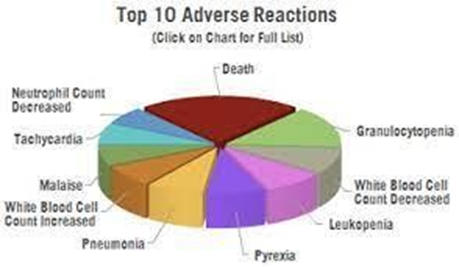The nurse should monitor which vital signs in the client who is taking Clozaril (Clozapine).
Blood Pressure
Respirations
Pain
Temperature
The Correct Answer is D
Choice A rationale: Clozapine has no effect on a patient’s blood pressure levels. However, blood pressure monitoring for all patients is crucial but the temperature is more relevant for a patient on clozapine.
Choice B rationale: Clozapine has no effect on an individual’s respiratory rate hence in this case it is not the priority vital sign to monitor.
Choice C rationale: Clozapine use does not cause pain. Furthermore, pain is not a vital sign.
Choice D rationale: One of the side effects of clozapine is agranulocytosis hence this predisposes the patient to infections which may manifest with fever. Therefore, it is important to monitor the patient’s temperature while on treatment.

Nursing Test Bank
Naxlex Comprehensive Predictor Exams
Related Questions
Correct Answer is A
Explanation
Lability refers to the rapid and unpredictable shift in an individual’s emotional states, for instance, an individual may move from laughing to crying within a span of seconds with no apparent reason. This may affect the individual’s ability to function and cope with daily life, as well as their relationships with others. It is caused by conditions such as brain injury, neurological disorders, mood disorders, or substance abuse.
Correct Answer is A
Explanation
Choice A rationale: this statement is correct since it shows that the nurse is understanding and sharing the patient’s feelings without judging them but instead the nurse is acknowledging the client’s pain and is showing compassion. It reflects on the patient’s emotions and validates their experiences.
Choice B rationale: this is a sign of sympathy and not empathy since it shows that the nurse is sorry for the patient but is not necessarily relating to their emotions.
Choice C rationale: this statement is dismissive since it tries to make the client feel better by overlooking and downplaying their negative feelings which may worsen their situation.
Choice D rationale: this is a hopeful response rather than an empathetic one and does not address the client’s current emotions and feelings despite being a source of encouragement and optimism.
Whether you are a student looking to ace your exams or a practicing nurse seeking to enhance your expertise , our nursing education contents will empower you with the confidence and competence to make a difference in the lives of patients and become a respected leader in the healthcare field.
Visit Naxlex, invest in your future and unlock endless possibilities with our unparalleled nursing education contents today
Report Wrong Answer on the Current Question
Do you disagree with the answer? If yes, what is your expected answer? Explain.
Kindly be descriptive with the issue you are facing.
